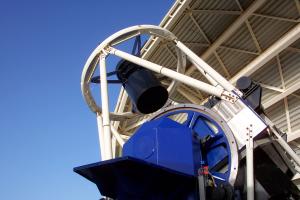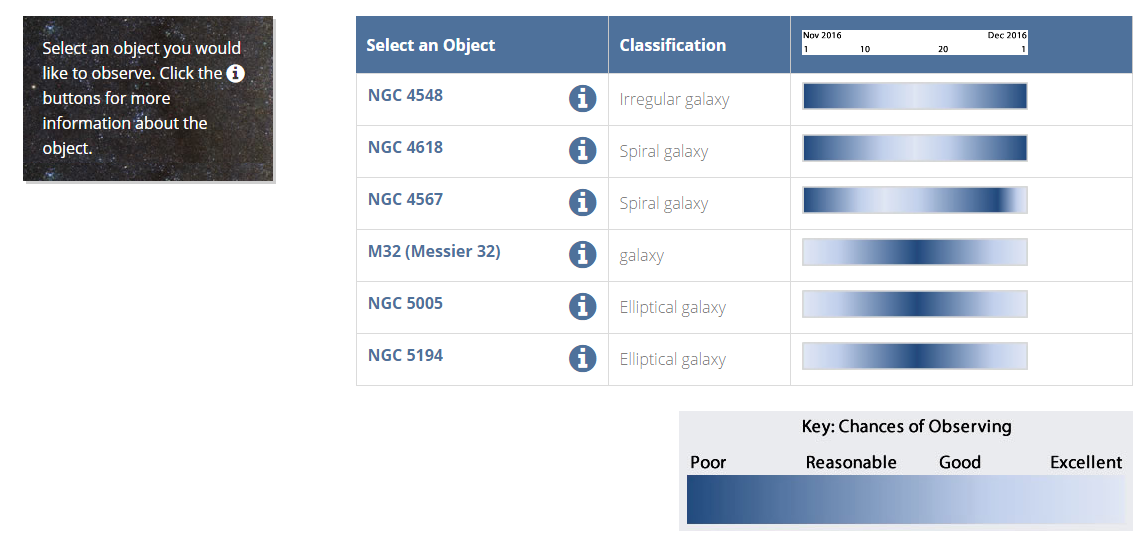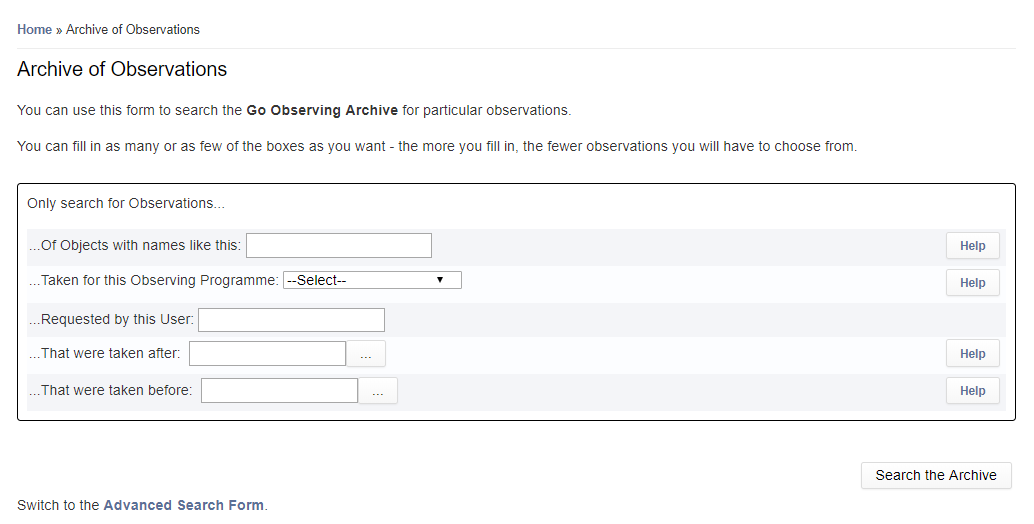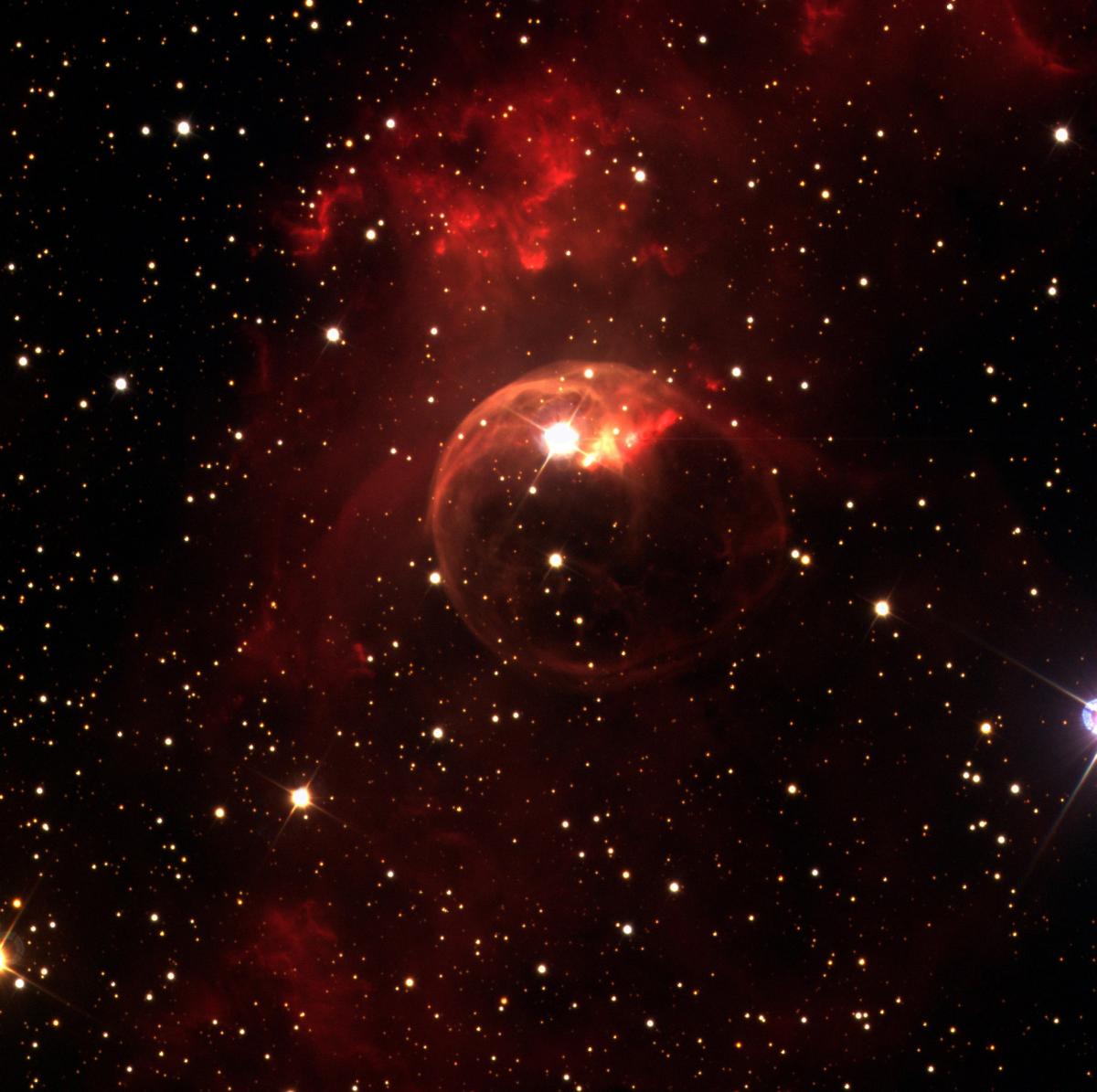Help with Go Observing
Go Observing is at the core of The Schools' Observatory - it is the system that guides you and your pupils through the process of choosing your observations, checking on their progress and downloading the data when it is ready.
Obviously there is a lot going on "behind the scenes" to make this as smooth as possible and below are a few frequently asked questions to help you to understand the system and make the best possible use of it.
What does Go Observing actually do?

Credit: Liverpool Telescope
Essentially, Go Observing is there so that you work as closely as possible to how a professional astronomer works with the telescope, but without getting bogged down in technical details.
This is necessary because using a professional telescope is a complicated process. From choosing suitable objects, through choice of instrument, filter and exposure time to the final submission to the telescope, there are many astronomical and technical difficulties.
Go Observing has been designed to hide all the uninteresting technicalities to just leave the important and interesting decisions. Of course, what is interesting and important will depend on what you are hoping to do (particularly from an educational standpoint) so the system is very flexible, adjusts to the age-group of the user and guides you through the process via a series of questions and simple choices.
The aim of this is to ensure that you have a good choice of possible observations without constant disappointment due to poor choices of object, filter, exposure time etc.
Once you have made your choice, Go Observing will then turn it into a form that the telescope can understand, send the request out, monitor what is happening to it and keep you informed.
How long will my observations take?

There are many factors that determine how long you may have to wait. Some of these are predictable; for example the fraction of a night that an object is observable, what the phase of the moon is, when a moon of Jupiter completes a full orbit and so on. These factors are included when Go Observing calculates the "observability" colour bars that you see when requesting your observations or choosing an object to observe.
Other factors, such as weather, are not predictable. You can keep an eye on the weather at the Liverpool Telescope using our special Weather Station Archive .
Weather permitting, observations that have "excellent" or "good" chances of being observed will usually be done the night that they are requested. The same is usually true for "reasonable" objects, although some nights the telescope is busier than others, so these may have to wait a night or two.
We keep a close eye on "turn-around time" for observations and sometimes "tweak" the system to make sure it is always running as efficiently as possible. It is also worth noting that the telescope does not know (or care) who requested a particular observation, so your requests have exactly the same chance as those from professional astronomers.
Are there any backups if my observation is not done in time?

Yes. All observations taken since the project began are available from the Archive. For a short period after they are taken (usually about 3 months) only the person requesting them can access the data, but after that all observations are available to any user.
You can search through the archive in a number of ways, for example by object name, or by the kind of Observing Programme. There is also an "advanced" version of the search form for even more detailed searches.
So, there should be no problem if you are unlucky with the weather and do not have the observations you want for a particular lesson or just want to explore the possibilities quickly and easily.
Are there any limits to the number of requests?
No, there are no limits to the number of observations you can request. There are two reasons why we can do this and not risk over overloading the telescope:
- The Go Observing system is not totally open-ended so there is an automatic limit to the total number of requests for any one night (although this limit is very large).
- If identical requests are made by more than one user, only a single observation is taken and given to both the users. However, this is never done retrospectively. So, if you request an observation of Jupiter a couple minutes after one was taken, another will be taken just for you.
This, again, is very similar to the system for professional astronomers and is done mainly to get observations back to people with the minimum delay possible - it is far quicker to take one observation of Saturn and give it to 50 people, than take 50 separate observations!
If you want to know more about the details of this process, please get in touch.
Can I choose to observe anything?

The LT "Field of View" is also shown
No, not quite. As mentioned above, observing is a complicated process and it is very easy to make mistakes. We have therefore decided to restrict the choice of object to those that we know will give sensible results.
For example, many people would like to observe the Andromeda galaxy. However, this is thousands of times the size of the field-of-view of the main camera on the Liverpool Telescope!
So, continuing with galaxies as an example, from a database of more than 20,000, we have selected about 400 that we know will produce good results. From these, Go Observing will select the handful that are best at a particular time for you to choose between. Over time, we will also be changing and enlarging the database so that the choice will always be evolving.
In this way, we make sure that people are not disappointed with their observations, which would be discouraging and counter-productive. However, this will sometimes mean that your favourite object is not observable. If you have a particular preference, or would like to see different objects included, please let us know and we can discuss with you the best way to observe your choices.
Does everybody have the same choices?
Not quite. One of the strengths of Go Observing is that it can adjust to the type and age of the user. A primary school child will obviously have different interests from an A Level physics student.
Also, a Teacher account gives access to a wider range of observing programmes than a Student account. Because of this, teachers can happily let their students work on their own without worrying about them getting lost or overloaded with too many choices.
Teachers can set up entire class sets of usernames using the Registration Management tool in the "My account" menu.
Why can't I find one of my old observations?
You can view your list of observations using My Observations. However, to keep the lists of manageable length, observations more than a year old will be removed. However, you can search for your old observations using the Archive.

Credit: The Schools' Observatory
Is there an easy way to make the same observation again?
This might be useful if an observation request was unsuccessful
- Log in to your account.
- Choose ‘My Observations’ in the Go Observing menu.
- In the ‘actions’ column, click the repeat arrow for the observation you want to repeat
Can I delete an observation or request?
- Log in to your account.
- Choose ‘My Observations’ in the Go Observing menu.
- In the ‘actions’ column, click the bin icon for the observation you want to delete

